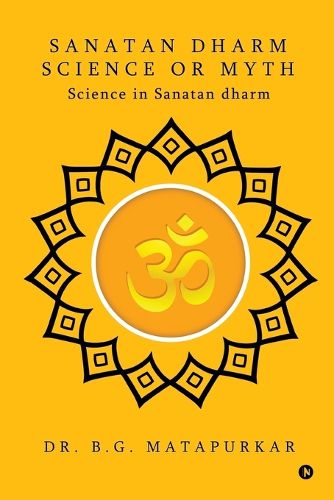Readings Newsletter
Become a Readings Member to make your shopping experience even easier.
Sign in or sign up for free!
You’re not far away from qualifying for FREE standard shipping within Australia
You’ve qualified for FREE standard shipping within Australia
The cart is loading…






This title is printed to order. This book may have been self-published. If so, we cannot guarantee the quality of the content. In the main most books will have gone through the editing process however some may not. We therefore suggest that you be aware of this before ordering this book. If in doubt check either the author or publisher’s details as we are unable to accept any returns unless they are faulty. Please contact us if you have any questions.
Shrimad Bhagavad Gita, a profound dialogue between Arjuna and Shri Krishna on the battlefield of Kurukshetra, is a concise essence of the Vedas and Puranas, addressing the nature of Dharma from a deeply philosophical and scientific perspective. Unlike the modern, divisive understanding of religion based on cults, sects, and communal ideologies, Dharma as portrayed in the Vedic texts is universal-rooted in virtues, duties, and cosmic order. The Acharya, or spiritual teacher, does not preach sectarian religion but expounds on Dharma as the foundational principle of life, harmonizing individual purpose with universal laws. Sanatan Dharma, as embedded in Sanskrit-speaking civilizations, emphasizes an intelligent and rational framework for human life, not limited to faith but aligned with analytical thought and scientific principles.
The Vedic Sanskars (sacraments)-core rituals and values enrooted in Vishwa Sanatan Dharma-offer guidance for righteous living through every phase of human life. These are more relevant today than ever, not as outdated customs but as scientifically-informed practices incorporating cosmology, astronomy, astrology, chemistry, geography, and ephemeris. Daily rituals like Yadnya (sacrificial fire) and hymns such as the Navgraha Stotra exemplify the scientific basis of Vedic traditions. Far from being orthodox, they integrate knowledge of Kaal Chakra (time cycle) and cosmic alignment into daily life. This deep-rooted scientific wisdom, found in the Vedas and Puranas, underscores that Sanatan Dharma is not a religion tied to any sect or faith-it is a universal path for humanity, aimed at achieving harmony, knowledge, and self-realization.
$9.00 standard shipping within Australia
FREE standard shipping within Australia for orders over $100.00
Express & International shipping calculated at checkout
This title is printed to order. This book may have been self-published. If so, we cannot guarantee the quality of the content. In the main most books will have gone through the editing process however some may not. We therefore suggest that you be aware of this before ordering this book. If in doubt check either the author or publisher’s details as we are unable to accept any returns unless they are faulty. Please contact us if you have any questions.
Shrimad Bhagavad Gita, a profound dialogue between Arjuna and Shri Krishna on the battlefield of Kurukshetra, is a concise essence of the Vedas and Puranas, addressing the nature of Dharma from a deeply philosophical and scientific perspective. Unlike the modern, divisive understanding of religion based on cults, sects, and communal ideologies, Dharma as portrayed in the Vedic texts is universal-rooted in virtues, duties, and cosmic order. The Acharya, or spiritual teacher, does not preach sectarian religion but expounds on Dharma as the foundational principle of life, harmonizing individual purpose with universal laws. Sanatan Dharma, as embedded in Sanskrit-speaking civilizations, emphasizes an intelligent and rational framework for human life, not limited to faith but aligned with analytical thought and scientific principles.
The Vedic Sanskars (sacraments)-core rituals and values enrooted in Vishwa Sanatan Dharma-offer guidance for righteous living through every phase of human life. These are more relevant today than ever, not as outdated customs but as scientifically-informed practices incorporating cosmology, astronomy, astrology, chemistry, geography, and ephemeris. Daily rituals like Yadnya (sacrificial fire) and hymns such as the Navgraha Stotra exemplify the scientific basis of Vedic traditions. Far from being orthodox, they integrate knowledge of Kaal Chakra (time cycle) and cosmic alignment into daily life. This deep-rooted scientific wisdom, found in the Vedas and Puranas, underscores that Sanatan Dharma is not a religion tied to any sect or faith-it is a universal path for humanity, aimed at achieving harmony, knowledge, and self-realization.